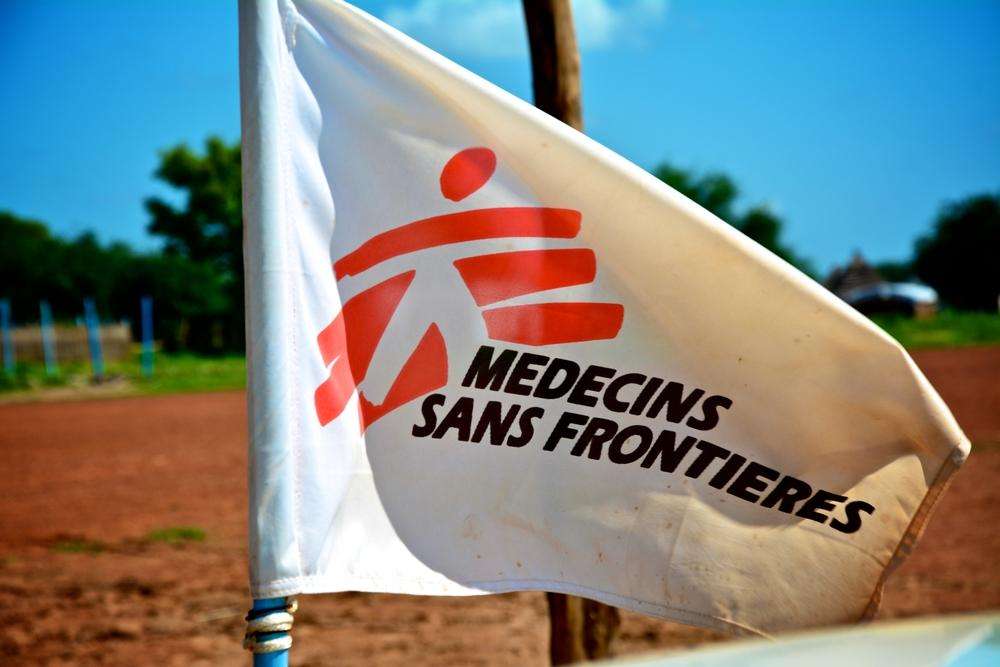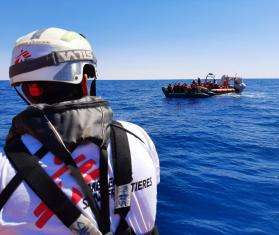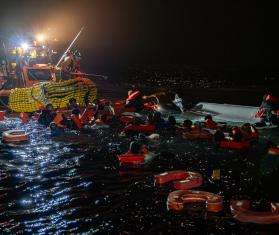Omar Obeid is the project coordinator for a Doctors Without Borders/Médecins Sans Frontières (MSF) project in southern Syria, which he has managed remotely for the last fourteen months. In recent weeks, fighting has intensified throughout southern Syria as opposing forces contest control of the city of Dara’a. As bombings and aerial attacks in eastern Dara’a increase, hospitals and medical structures in the area have been forced to close to avoid being targeted. Here, Obeid describes the humanitarian situation.
What is happening in southern Syria? What is the current humanitarian situation?
Since mid-February, largely after the Astana peace talks [which took place in March in Kazakhstan], Dara’a city has been practically emptied out. At least 25,000 to 35,000 people have been displaced, mostly due to the intensified fighting and bombing in Dara’a city and the hostilities in the nearby Yarmouk Valley. Those who have fled have taken refuge in the farmlands southeast of Dara’a City, with very few belongings or sources of support. From the Yarmouk Valley to the west around the area of Ash-Shajara, roughly 2,000 families (around 8,000–10,000 people) have been displaced.
We are talking about a war where the civilian population itself is targeted. Their homes, schools, markets, hospitals, and other medical structures are predictably bombed, especially when the fighting escalates. A lot of displaced families go to households in neighboring towns, where they are hosted by other families.
But because the displacement has been ongoing since last year, when similar fighting erupted in the areas of Sheikh Miskin and Atman, and amid displacement also from Dael and Ibtaa earlier this year, this continues to add pressure to an already affected population. Thus, there are now people sleeping in the streets and outside in the farmland. Makeshift tents that can barely meet the shelter, water, or hygiene needs of families have become a common occurrence too.
What are the most pressing needs?
With the continuous fighting, the biggest concern at the moment is the protection of the vulnerable population and their needs of proper shelter. There are few formal camps in the Dara’a area and, despite concerted efforts, the needs for proper shelter and tents for the displaced population have still not been met. That is why there are still so many families in streets and farmlands. And this puts at risk the lives of thousands of people.
Many roads have also been cut off or partially closed because of the conflict—for instance from western Dara’a to eastern Dara’a. These road difficulties result in major problems for access to all kinds of assistance.
In terms of health needs, although MSF and the other organizations have sought to anticipate periods of increased violence, hospitals and medical facilities in the south as a whole continue to be understaffed and underfunded. Most hospitals are not receiving enough supplies, medications, or funding for salaries and running costs to meet their needs. There are still very large gaps in all aspects of health care—whether it’s secondary and tertiary health care, routine vaccination, mental health services, chronic diseases, or reproductive health, for example.
The lack of access to quality health care in southern Syria, as well as along the border with Jordan, also means war-wounded Syrians have difficulty accessing specialized surgical care such as for poly-trauma injuries and highly complex interventions. In March, there has been an increase in the number of war-wounded people allowed into Jordan for such care, but it is still far from meeting the sheer scale of needs on the ground.
What is MSF doing to address these needs?
The desperate situation in Syria as a result of the war—including bombings and the ever-present threat of attacks—not only denies the population access to medical facilities but also affects the scope and effectiveness of the medical care that still can be provided. While MSF has been able to find ways of providing health care in many parts of the country, including in southern Syria, this has not been without significant challenges.
Currently, MSF supports a few hospital structures in southern Syria, for instance through blood banks and remote technical support for a hospital that provides an operating theater, emergency unit, maternal health services, and inpatient care. The support projects run by MSF consist of donations of essential medical equipment and relief material, distance training for staff inside Syria, and other support to keep the facilities afloat in these dire conditions. MSF support is tailored based on needs and on the capacity of other agencies to support the health facilities inside Syria. As such, some facilities rely solely on MSF support, while others receive partial support from other agencies (either international or local).
In the past six weeks, Syria's Dara'a Governorate has seen a surge of 30,000 internally displaced people as fighting continues in the southern part of the country. We distributed relief items in two areas in response. Both are on the front lines of the conflict. MSF responded with an emergency distribution of 893 kits of essential relief items (including hygiene kits, clothing, cooking utensils, blankets and mattresses).
As the clashes in Dara'a intensified, MSF donated a number of these kits to Dara’a city and Nassib. The road between the east and west of Dara’a Governorate may be potentially cut off—so as a response MSF plans to support a blood bank referral center in a nearby area. We have also pre-positioned emergency and surgery kits in some health facilities.
But the fact remains that we are not physically there. MSF has long made proximity to patients, and the direct implementation of medical care, a key tenet of its interventions around the world. The lack of proximity makes us less well-positioned to respond to emergencies, given all the constraints such as shifting front lines, administrative and bureaucratic hurdles, violence along access routes, and general safety and security concerns.
More recently, there have been a lot of restrictions to the supplies of any of the organizations permitted to go into Syria. There are constant supply shortages. The closure of the border has also made it difficult to respond quickly to emergencies and increased violence.
The lack of proximity also makes the provision of quality medical care very challenging. It is not only difficult to identify the gaps and areas where the quality can be improved; it also makes oversight of the current quality of health care provision difficult—especially when we already don’t have the right resources and stock readily available.
We also need to keep in mind that we are working in an area where medical structures and hospitals specifically are under attack, and we have to be careful with the interventions we are doing so as to try to offer proper medical care without increasing the risk to the beneficiaries and our staff. Firstly, it is difficult to find medical staff in general—they are underpaid and very overworked. And almost all the hospitals in southern Syria have been hit at least once, if not repeatedly, since the conflict started. Here we are struggling to get to the bottom of the question of protection of not only our own staff but also the hospitals'. Moreover, we have to balance the care and services we provide with the increased risk of patients coming to structures that are targeted.
What are the challenges associated with operating an MSF project remotely?
It is always challenging to work from a remote setting, and there is hesitation to run our projects remotely. We constantly rely on the observations of other humanitarian actors or the staff we have inside Syria in trying to assess the needs. There is a lot more coordination required between us and the actors to try to understand the reality on the ground and understand what other organizations and actors are doing, since we are not physically there to witness it in person.
This fragments the response as a whole. Even though there are enough actors operating inside a relatively small zone in southern Syria, the response is still insufficient and funding limitations persist. Due to the lack of coordination, the different priorities of the different actors, and the different systems of each organization, the aid response in Syria is fragmented.
Distance also means you cannot see what the conditions are and what needs to be improved in terms of focusing on quality and continuously improving health care at the facilities. There are a lot of challenges as well when you don’t have a chance to meet and work closely in person with those who are doing all the hard work. Training and capacity-building is a huge issue, alongside the difficulties of managing staff remotely. Moreover, you don’t have the chance to develop a personal relationship in the same way, and it becomes harder to direct and work through some of the problems we are constantly facing.
MSF directly operates four health facilities in northern Syria and provides support to more than 150 health facilities throughout the country. Read more about MSF's work in Syria here.




